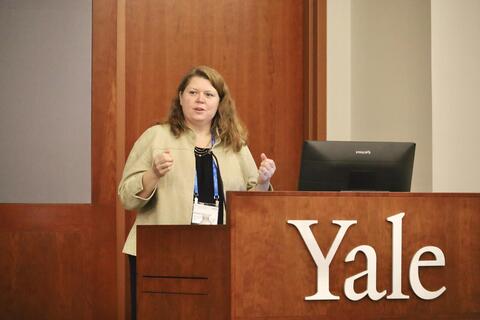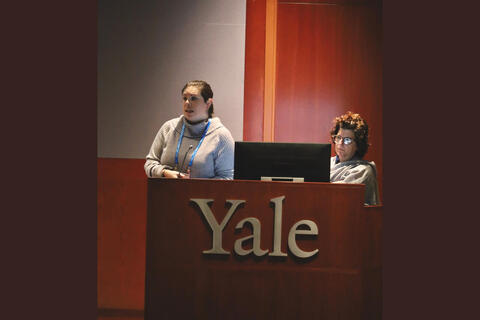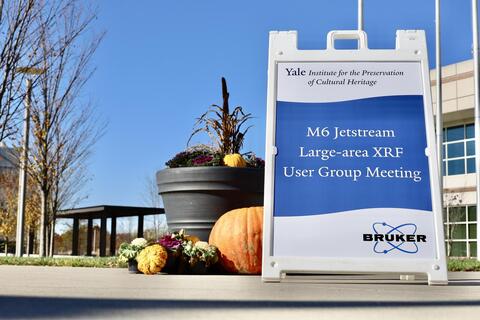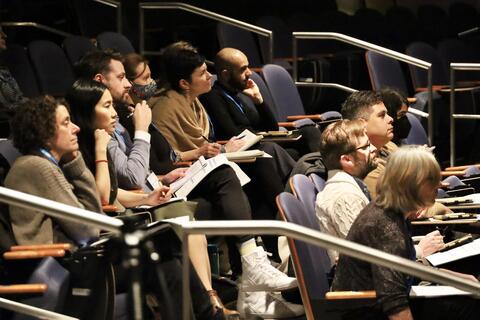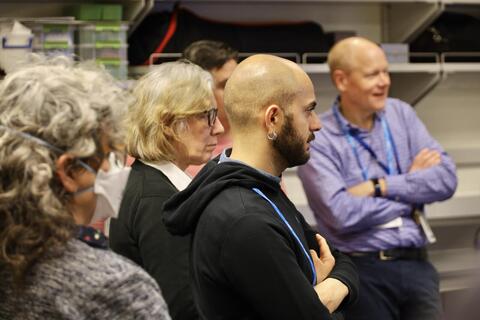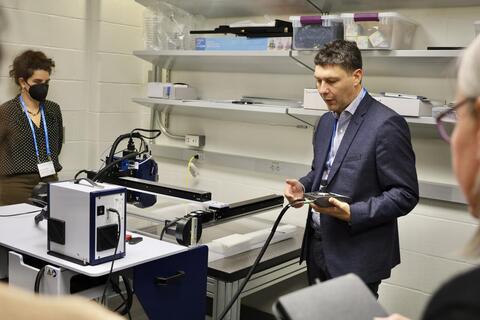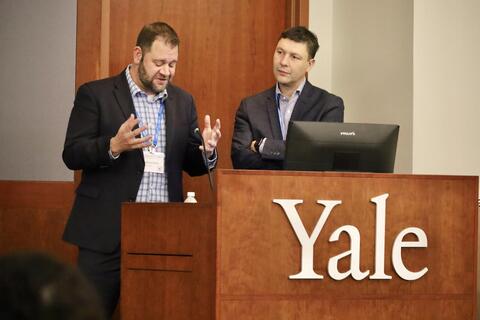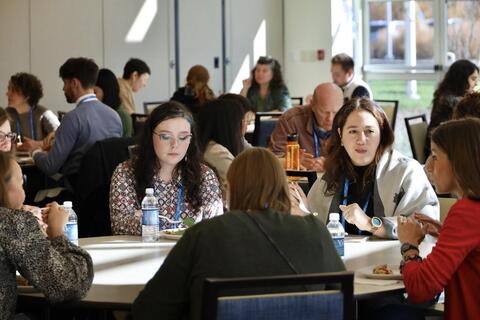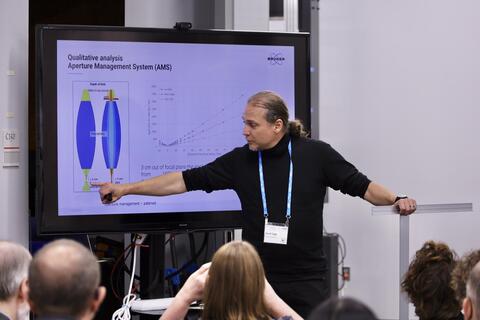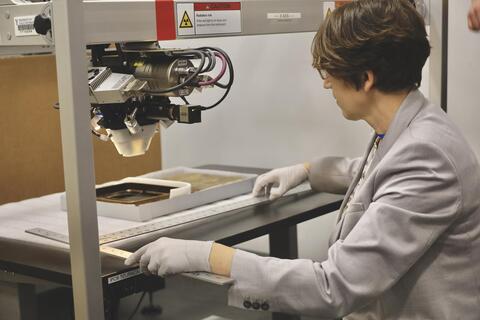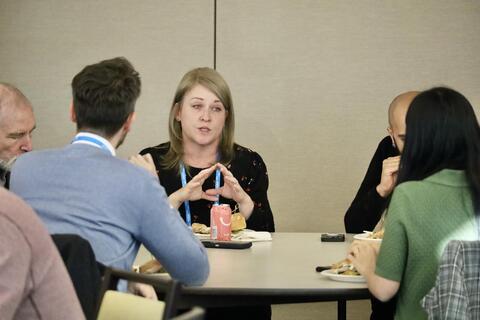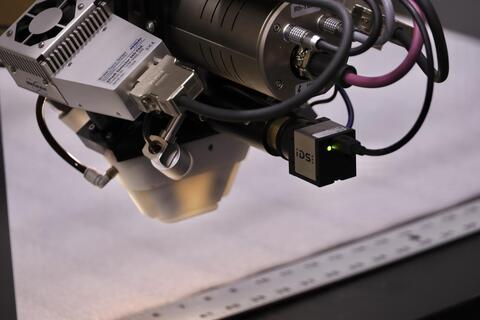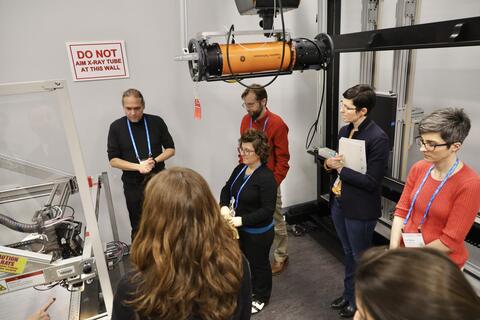By Jon Atherton
In late fall 2022 the Institute for the Preservation of Cultural Heritage (IPCH) partnered with high-performance scientific instrument giant Bruker to host the M6 X-ray Fluorescence (XRF) Spectroscopy User Group at Yale’s West Campus. XRF is a non-destructive analytical technique used to determine the elemental composition of materials, and therefore a key technology for those in the art world.
The Bruker M6 is a specialized XRF instrument capable of generating object-scale elemental maps in addition to making point measurements.
The event continued important efforts to build an XRF user community that is serving to increase access to new technology and experimental approaches in cultural heritage conservation.
IPCH’s work with XRF techniques is a decade in the making, starting with a 2013 “bootcamp” that responded to a perceived gap between user operation of handheld instruments and data analytics. In 2019 researchers at the Institute used XRF techniques to discover a painting beneath a painting – Yale University Art Gallery’s Moonlight, by Ralph Albert Blakelock.
Organized by Anikó Bezur, Director of the Institute’s Technical Studies Lab, and the lab’s Marcie Wiggins, the two-day workshop featured talks and hands-on demonstrations designed to share knowledge. Participants included conservators from the Yale University Art Gallery, the Yale Center for British Art, the Yale Peabody Museum, and the Yale Library, with objects from across each of the collections used during the workshop to allow real-world analysis.
Bruker Nano Analytics has a long history of working closely the cultural heritage community to design and adapt instrumentation for the special challenges that working with museum objects pose.
The M6 Jetstream concept emerged from the cultural heritage community, where the first uses of scanning XRF were carried out at synchrotron sources. While museums and academic labs have built bespoke scanning XRF instruments based on x-ray tubes, the Bruker M6 Jetstream is the first commercial instrument that brings the elemental mapping capability to a broader range of users.
